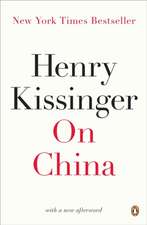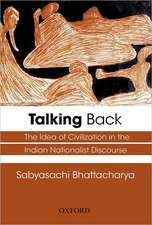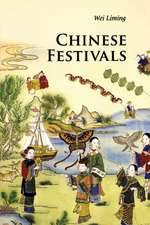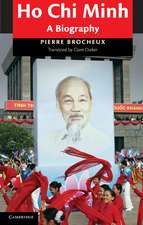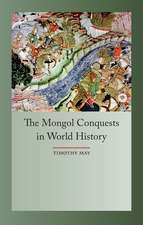Peasants without the Party: Grassroots Movements in Twentieth Century China
Autor Lucien Biancoen Limba Engleză Paperback – 31 mai 2001
| Toate formatele și edițiile | Preț | Express |
|---|---|---|
| Paperback (1) | 370.71 lei 6-8 săpt. | |
| Taylor & Francis – 31 mai 2001 | 370.71 lei 6-8 săpt. | |
| Hardback (1) | 1005.80 lei 6-8 săpt. | |
| Taylor & Francis – 31 aug 2000 | 1005.80 lei 6-8 săpt. |
Preț: 370.71 lei
Nou
Puncte Express: 556
Preț estimativ în valută:
70.93€ • 74.07$ • 58.58£
70.93€ • 74.07$ • 58.58£
Carte tipărită la comandă
Livrare economică 15-29 aprilie
Preluare comenzi: 021 569.72.76
Specificații
ISBN-13: 9781563248405
ISBN-10: 1563248409
Pagini: 340
Dimensiuni: 152 x 229 x 21 mm
Greutate: 0.48 kg
Ediția:1
Editura: Taylor & Francis
Colecția Routledge
Locul publicării:Oxford, United Kingdom
ISBN-10: 1563248409
Pagini: 340
Dimensiuni: 152 x 229 x 21 mm
Greutate: 0.48 kg
Ediția:1
Editura: Taylor & Francis
Colecția Routledge
Locul publicării:Oxford, United Kingdom
Cuprins
Acknowledgments; Abbreviations; Introduction; 1. Secret Societies and Peasant Self-Defense, 1921–1933; 2. Reflections on Chinese Peasants and Revolution; 3. A Peasant Revolution?; 4. How Credible Are the Numbers?; 5. Peasant Uprisings Against Poppy-Tax Collection in Suxian and Lingbi (Anhui) in 1932; 6. The Responses of Opium Growers to Eradication Campaigns and the Poppy Tax, 1907–1949; 7. Resistance to Land Rent, 1895–1949; 8. Looting and Food Riots; 9. Early Twentieth-Century Xiedou; 10. Xiedou during the Second Half of the Twentieth Century; 11. Peasant Responses to the Chinese Communist Party Mobilization Policies, 1937–1945; 12. Peasant Resistance in the PRC; 13. Weak Weapons; Appendix 1: Time Distribution of Rural Disturbances; Appendix 2: Cases of Peasant Resistance to Opium Eradication Campaigns, 1907–1949; Appendix 3: Cases of Peasant Resistance to Opium Tax, 1896–1949; Appendix 4: Geographical Distribution of Tenant Disturbances (1895–1949) According to Various Sources; Appendix 5: Differences and Convergences Between Bernhardt’s and My Own Views; Glossary of Chinese Terms; Index; About The Author;
Descriere
Exploring the question of whether China's peasantry was a revolutionary force, this volume pays particular attention to the first half of the 20th century, when peasant-based conflict was central to nationwide revolutionary processes. It traces key themes of social conflict and peasant resistance.

